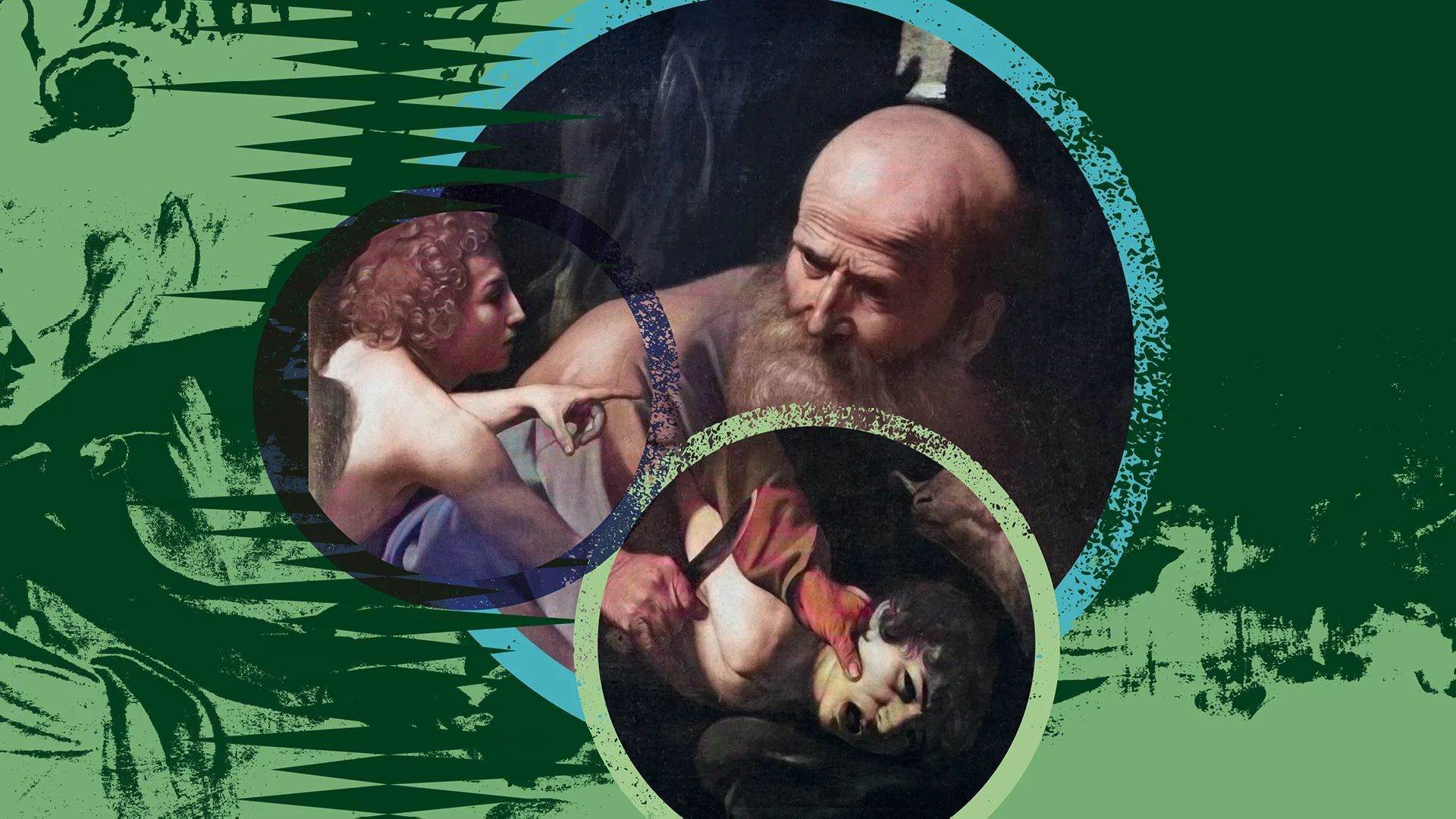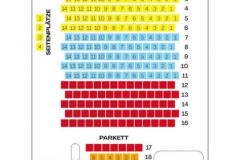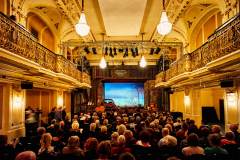Isacco
June 2025 | ||||||
|---|---|---|---|---|---|---|
Mo | Tu | We | Th | Fr | Sa | Su |
Isacco
Marianna Martines
Oratorio in two parts
Libretto by Pietro Metastasio
Marianna Martines was regarded as a child prodigy: she could sing arias, play the harpsichord and compose. Championed by Metastasio, poet laureate at the court of Vienna, she took lessons with Joseph Haydn and Nicola Porpora, entertained Wolfgang Amadeus Mozart in her drawing room, played for Maria Theresa and elected not to marry in order to devote her energies entirely to music. But as time passed, the history of culture found no place for such a gifted and successful woman, and her name, once so celebrated, became little more than a footnote in the world of music. Even today, performances of her works remain a rarity. Among her most important compositions is the oratorio Isacco figura del redentore (Isaac, Model for the Saviour) written in 1782. She wrote it in honour of her great supporter Metastasio who had died shortly before its first performance and had written the libretto over forty years earlier. The work is characterised by a psychologically polished plot, enthralling recitatives and magnificent coloratura arias. The plot is based on the Book of Genesis: An angel commands Abraham in the name of God to kill his son Isaac. Abraham obediently drags his son to a sacrificial altar, but just as he is about to strike the fatal blow, God intervenes and foregoes the human sacrifice. With this work, director Eva-Maria Höckmayr makes her debut in Vienna.
In Italian with German and English surtitles
Introduction to the work 30 minutes before curtain-up
Program and cast
Conductor: Chiara Cattani
Director and costume: Eva-Maria Höckmayr
Stage and costume: Fabian Liszt
Light: Karl Wiedemann
Dramaturgy: Andri Hardmeier
Abramo: Christian Senn
Isacco: Dennis Orellana
Sara: Sophie Gordeladze
Angelo: Andjela Spaic
Bach Consort Wien
Chamber Opera Vienna
Wiener Kammeroper is an opera theatre and opera company founded by conductor Hans Gabor. As early as 1948 he initiated the "Vienna Opera Studio" - a company without a theatre of its own. The new name of the company, "Wiener Kammeroper" (Vienna Chamber Opera), reminiscent of chamber music and society plays in an intimate setting, was first used officially in 1953.
History
Initially the company played in the suburbs of Vienna, specially for the "Arbeiterkammer" in Vienna, at Mozart Hall of Vienna's "Konzerthaus" concert hall for young audiences under the patronage of the "Theater der Jugend" and during the summer months at the rococo Schönbrunn Palace Theatre.
Since the early years, works by contemporary composers, such as Boris Blacher's The Flood (1956), have been a mainstay of the repertory along with opera buffaand classic Viennese operetta, and many a rarity was discovered, e.g. Alessandro Scarlatti's Triumph of Honour (1956).
The dream of a permanent home came true. The first one-year subsidy to Wiener Kammeroper granted by the Ministry of Education and the City of Vienna was the pre-requisite for funding its own theatre. The right place was found soon: located in the heart of the city, at Fleischmarkt 24, a former dance hall, which had also been used for theatre performances earlier, was adapted to fulfil the requirements of an operatic stage. The new theatre was inaugurated with a performance of the one-act operas The Marriage by Martinů, The Gambler (Il marito giocatore) by Orlandini and Monteverdi's Ariadne's Lament as adapted by Carl Orff.
Till today, numerous original performances and Austrian premières have remained a trademark of the Wiener Kammeroper repertory. One among many artistic highlights of the past was George Tabori's legendary 1986 production of Pagliacci by Leoncavallo; Wiener Kammeroper was invited to present the production at the "Berlin Theatertreffen" festival a year later.
In the early 1980s, Hans Gabor retired from conducting, exclusively acting as the artistic director and manager of his theatre in addition to running the "International Belvedere Singing Competition", which he founded in 1982. Today, the competition is the largest "singers' exchange" in the world, a veritable "Wall Street of Voices".
The series "Studio K" (1983) seeks to offer a platform to contemporary composers. Chamber operas by Tom Johnson, Peter Maxwell Davies, Luciano Chailly, Philip Glass and Hans Werner Henze saw their premieres in Vienna. Again, George Tabori contributed a production which met with critical acclaim abroad. To address a young audience, classics such as La Bohème or Carmen were translated into the musical language of rock music.
In the summer of 1992 Wiener Kammeroper began producing open-air performances of Mozart operas at the Roman Ruin in the palace gardens of Schönbrunn with the title "Mozart in Schönbrunn". However, in 1999, conservationists found that the monument was in jeopardy, and performances on the unique open-air stage had to be discontinued.
In 1994 Hans Gabor died unexpectedly and Rudolf Berger continued the successful programming.
During the 1999/2000 opera season Isabella Gabor and Holger Bleck took over the management of the Kammeroper. In keeping with the Kammeroper's tradition, the twin focus continued to be promotion of the young generation of singers with the renamed "International Hans Gabor Belvedere Singing Competition" and the opera productions at the Kammeroper's location on Fleischmarkt.
In regard to its mission, a decisive part of the artistic work of the management is finding rarities, chamber operas, or even opera pieces that have hardly ever or never been performed in Austria, but which reveal a quality that is truly compelling. Isabella Gabor and Holger Bleck described their aims at the press conference announcing the season of 2006/07:
"Art in the sense of telling stories, musical theatre that is current, touching, makes us happy, upsets us, makes us want to discuss things, the advancement of young musicians, and last but not least an attentive audience. This, and much more, makes Wiener Kammeroper what it is – music theatre with a unique and unmistakable concept in the artistic environment of Austria and Vienna"
Wiener Kammeroper stands for programming which rests on four pillars – chamber musical, baroque opera, contemporary musical theater and opera buffa.
From the autumn of 2012, the management of the company and theatre was transferred to the Theater an der Wien whose director of artistic administration, Sebastian F. Schwarz, has taken over the artistic direction of Wiener Kammeroper. The young ensemble of Theater an der Wien is chosen for 2 seasons to perform major roles at Kammeroper while appearing in smaller to medium sized roles at the mother house. Currently Schwarz presents up to 5 opera productions with each between 5 (for modern repertoire) and 12 (well known titles in chamber versions) performances. Since the change in management, attendance and ticket sales have risen considerably and are currently at a level of about 98%.
Source: Wikipedia

 EN
EN DE
DE IT
IT FR
FR ES
ES RU
RU JP
JP RO
RO
 Seating plan
Seating plan 